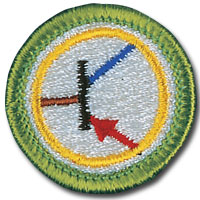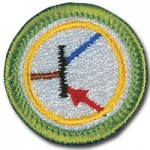 If you find you can’t get enough of electricity, then electronics is the next step on your science adventure. Kids that work through this merit badge will have a solid understanding of circuits, electrical components, troubleshooting, and more as they build audio, digital, analog, and more circuits!
If you find you can’t get enough of electricity, then electronics is the next step on your science adventure. Kids that work through this merit badge will have a solid understanding of circuits, electrical components, troubleshooting, and more as they build audio, digital, analog, and more circuits!
[am4show have=’p8;p9;p11;p38;p92;’ guest_error=’Guest error message’ user_error=’User error message’ ]
Here’s a set of experiments that will help you meet your requirements. These are the official requirements as set by the Boy Scouts of America (in bold):
Requirements and Experiments:
Show the right way to solder and desolder. Show how to avoid heat damage to electronic components.
Soldering is one of the first skills we teach kids when they first start learning electronics. It’s fun, and it feels like real science (and it is). You’ll want to watch out for accidents with the soldering iron – it’s hotter than your oven gets, so take extra care when you learn how to solder with our instructional videos. Even if you already know how, it’s good to watch these videos to pick up on a couple of advanced tips, too.
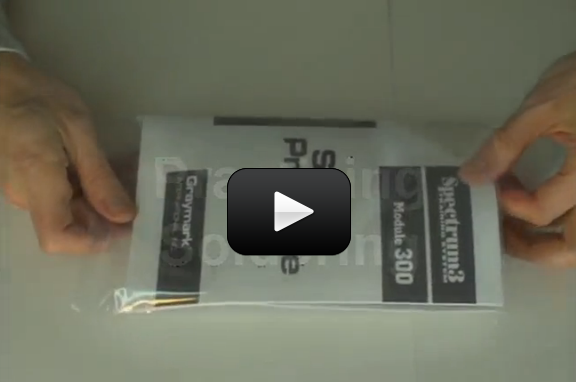 |
Tell about the function of a printed circuit board. Tell what precautions should be observed when soldering printed circuit boards.
If you’ve ever used a printed circuit board, you know how much nicer it is to have your wires stay put and be already in place, especially if you’ve ever done point-to-point soldering or made a circuit on a breadboard. The video above will walk you through all the basics of soldering on a printed circuit board, so make sure you watch it!
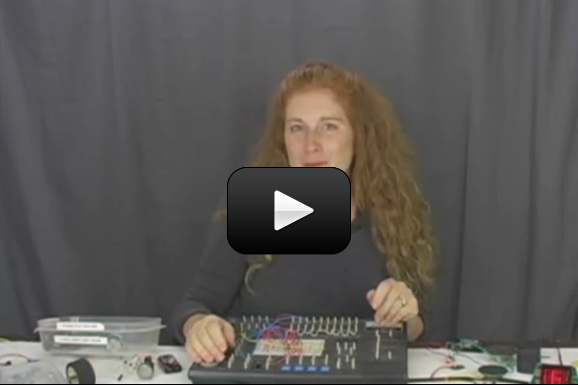 |
Tell how you can use electronics for a control purpose, and then build a control device circuit.
These are some of my favorite circuits to build with kids, as they teach the basics of not only components, but also circuit design, and they really work well! A lot of kits out there aren’t designed well, or hard to troubleshoot, or simply fall apart because they’re too cheap to solder together. These are the ones I use when I teach my upper level electronics classes with students.
 |
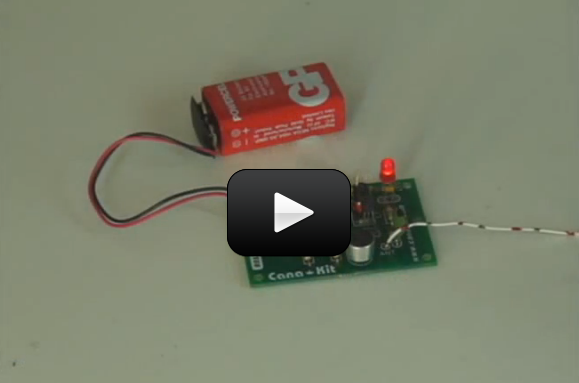 |
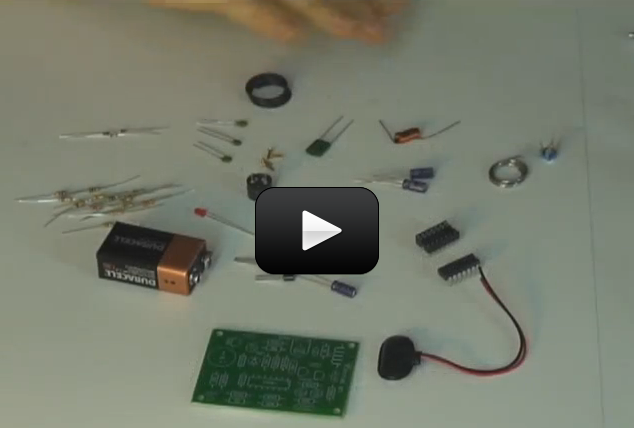 |
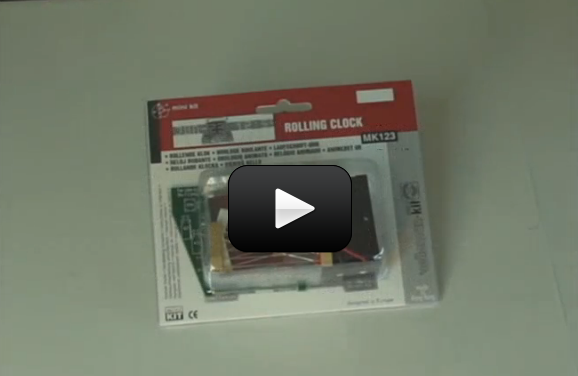 |
Tell about the basic principles of digital techniques, and then build a digital circuit. Show how to change three decimal numbers into binary numbers and three binary numbers into decimal numbers.
Since the mid 1980′s, digital electronics have slowly become an ever increasing part of our lives. And now, you’d be hard pressed to find any device that doesn’t use digital electronics. Digital electronics are in the TV you watch, your computer, your phone, your car, the appliances in your kitchen, and so much more. So, to help understand how digital works, we’ll be exploring digital electronics in this series of videos.
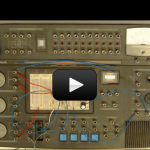 |
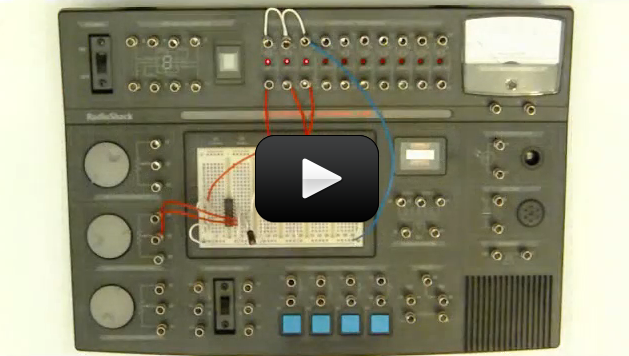 |
 |
Tell about three audio applications of electronics, and then build an audio circuit.
Here are a couple of my favorite audio electronics projects. The Laser Communicator actually rides music on a laser beam, which is just cool. The Audible Light Probe is actually a very sensitive circuit that changes frequency with light intensity changes. The Bug is a neat little circuit that allows you to transmit your voice to a local radio station you can tune your stereo to. And who doesn’t need an annoyingly loud police siren going off in their room?
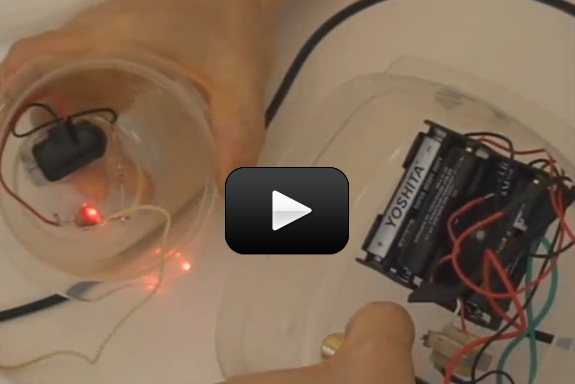 |
 |
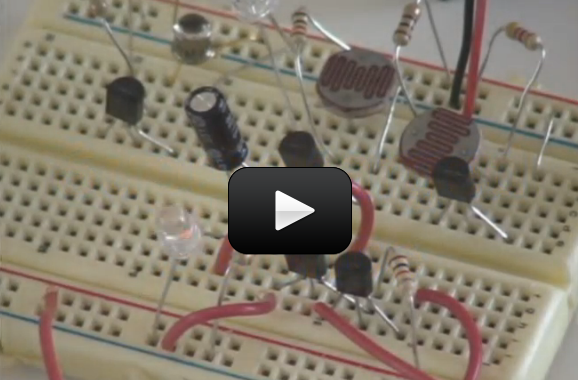 |
 |
Show how to read the schematic diagram of the project you chose and, to the best of your ability, explain to your counselor how the circuit you built operates.
Reading a schematic is like learning another language. Once you’re fluent, you’ll be able to decipher most circuits in a snap, and be able to communicate your ideas with other scientists in a way that they really understand. Read more about schematics here.
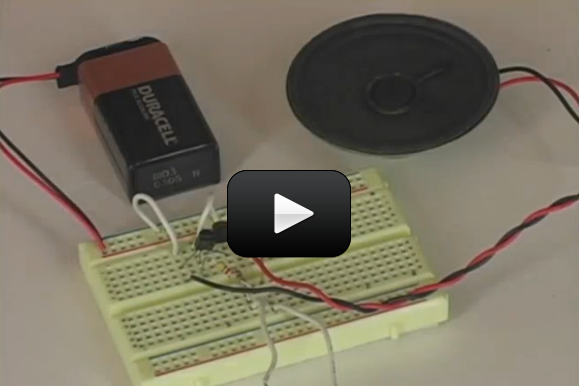 |
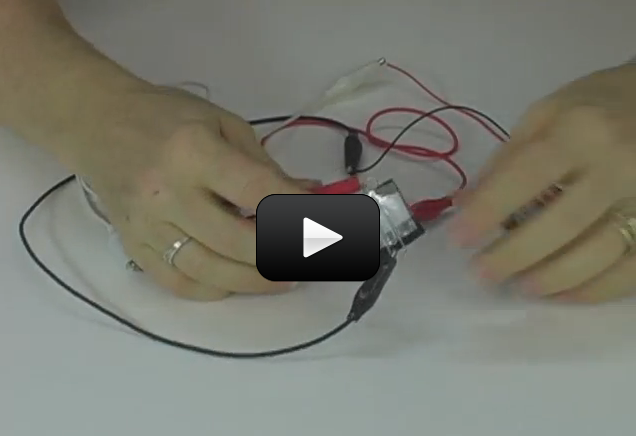 |
Show how to solve a simple problem involving current, voltage, and resistance using Ohm’s law.
If you hook up an LED to a 9V battery, how much current is flowing through your circuit? Well, that’s what a digital multi-meter (DMM) and a little math are for. There’s an entire video on how to use a digital multimeter at the bottom of this page (see below).
For two AA batteries, suppose you measure 9.1 volts (batteries rarely are exactly what they claim to be on their packaging.) Using your DMM, you measure a resistance of the LED as 18 ohms. How much current is flowing through the wire?
V = I x R (Voltage = Current x Resistance)
I = V / R = 9.1 Volts / 18 ohms = 0.51 Amps
Power (P) can be found by this equation: P = I V, or Power = Current x Voltage. FOr our circuit:
P = (0.51 A) x (9.1 V) = 4.6 Watts (or 4.6 W)
Power can also be found like this: P = I2 R
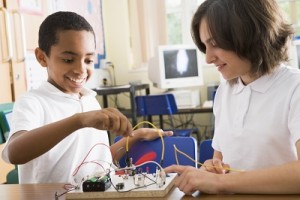 |
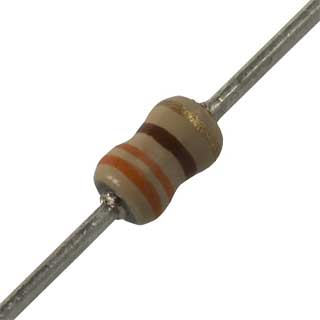 |
Tell about the need for and the use of test equipment in electronics. Name three types of test equipment. Tell how they operate.
One of the most useful tools a scientist can have! A digital multimeter can quickly help you discover where the trouble is in your electrical circuits and eliminate the hassle of guesswork. When you have the right tool for the job, it makes your work a lot easier (think of trying to hammer nails with your shoe).
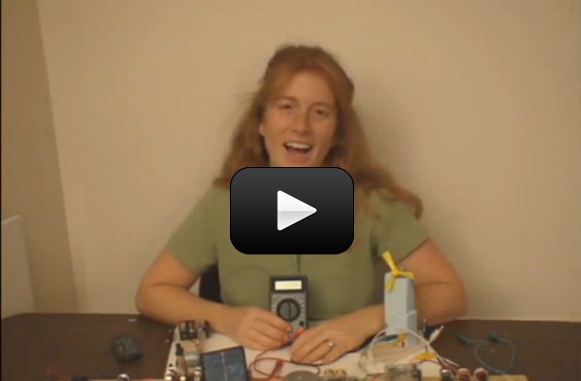 |
When you earn your badge, send us a photo so we can post it to the website! Good luck!
[/am4show]

